
Training your puppy is one of the most rewarding experiences you can share with your new furry friend. Whether you’re a first-time dog owner or a seasoned pet parent, teaching your puppy essential commands is crucial for ensuring their safety and enhancing their behavior. Understanding basic commands can not only improve your puppy’s obedience but also strengthen the bond between you and your pet. In this article, we’ll delve into the fundamentals of puppy training, providing you with a comprehensive step-by-step guide to teaching essential commands. By the end, you’ll feel empowered to nurture a well-mannered, happy puppy.
As you embark on this journey, remember that training is not just about correcting bad behavior; it’s about building a strong, positive relationship with your pet. The techniques you’ll learn in this article will set the groundwork for a lifetime of companionship and understanding. Let’s get started on the exciting journey of puppy training!
Why Basic Puppy Training Matters
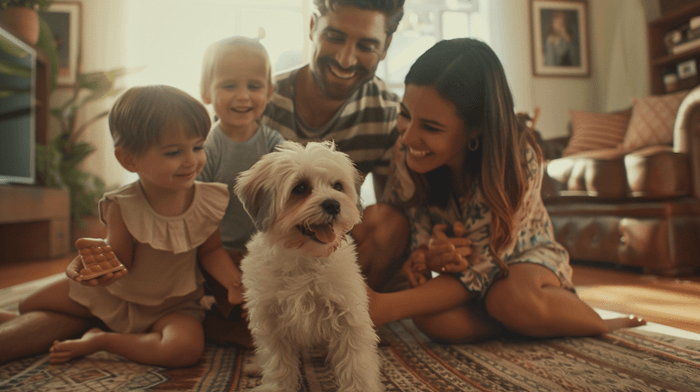
1. Promotes Safety
One of the most important reasons to train your puppy is safety. Essential commands such as “come,” “sit,” and “stay” can prevent dangerous situations. For instance, when off-leash, a puppy that responds promptly to “come” can avoid traffic or other hazards. Studies show that well-trained dogs are less likely to get into dangerous situations, reducing the risk of accidents. A dog that reliably obeys commands can be kept out of harm’s way, ensuring a safer experience for both the dog and the owner.
2. Enhances Communication
Training your puppy fosters a better understanding between you and your pet. It establishes a common language, making it easier for both of you to understand each other’s needs. This communication reduces frustration for both you and your puppy, leading to a more harmonious relationship. When your puppy understands basic commands, you can guide their behavior more effectively, which is essential for their overall well-being.
3. Improves Behavior

Basic commands help to manage and correct unwanted behaviors. A puppy that understands commands like “leave it” can be prevented from chewing on furniture or getting into things they shouldn’t. Positive reinforcement during training encourages good behavior, resulting in a well-mannered companion. This aspect of training not only makes living with your puppy more pleasant but also prepares them for social interactions with other dogs and people.
4. Strengthens the Bond
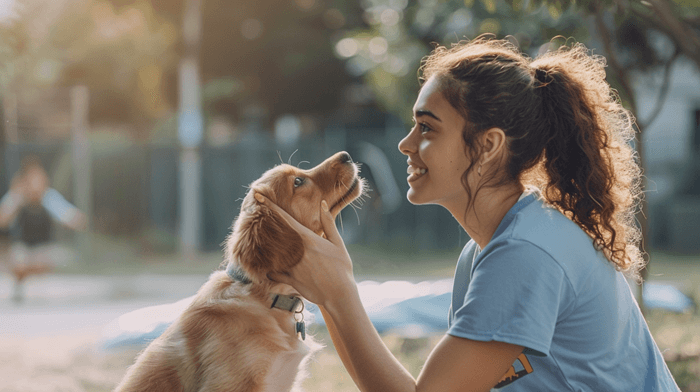
Training sessions are an excellent opportunity for bonding with your puppy. Engaging in interactive training builds trust and mutual respect, enhancing your relationship. The more time you spend training together, the stronger your bond will become, creating a loyal and loving companion. The trust developed during training can lead to a deeper emotional connection between you and your pet, which is vital for their happiness and security.
5. Socialization Opportunities
Puppy training often takes place in group classes, providing an excellent opportunity for socialization. Exposing your puppy to other dogs and people in a controlled environment helps reduce anxiety and promotes confidence, which is essential for their overall development. Proper socialization can prevent behavioral issues such as aggression or fearfulness, allowing your puppy to thrive in various environments.
6. Encourages Mental Stimulation
Training your puppy is not just physically engaging; it also provides mental stimulation. Puppies thrive on challenges, and learning new commands keeps their minds active. This mental exercise is crucial for their development and helps prevent boredom-related issues, such as destructive behavior or excessive barking.
7. Prepares for Advanced Training
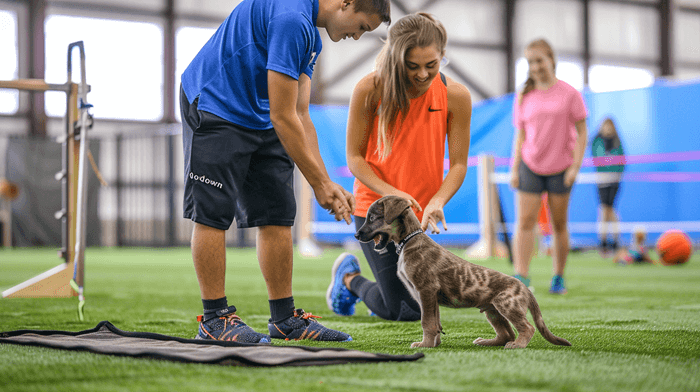
Establishing a foundation of basic commands sets the stage for more advanced training in the future. Whether you’re interested in agility training, obedience competitions, or service work, starting with the basics is essential. A puppy that understands commands well will be more receptive to learning complex tasks, making them a more versatile companion.
Step-by-Step Guide to Teaching Essential Commands
Step 1: Prepare Your Environment
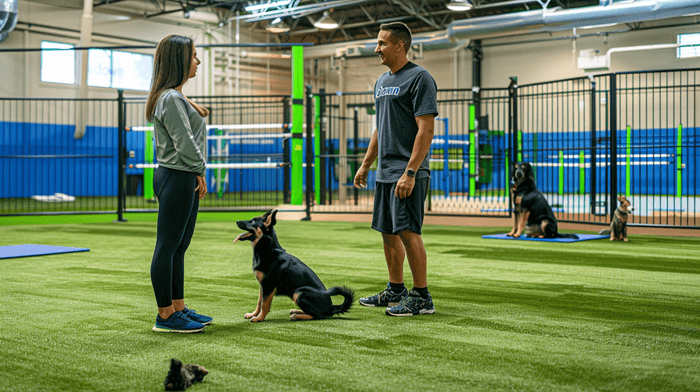
Creating the right environment for training is essential for success. Choose a distraction-free area where your puppy can focus on you. A quiet room in your house or a secure backyard works well. Gather all necessary supplies before starting: treats, toys, a leash, and your puppy’s favorite blanket or mat. This preparation will help ensure a smooth training session.
Step 2: Use Positive Reinforcement
Positive reinforcement is the key to successful puppy training. Always reward your puppy with treats, praise, or playtime when they follow a command correctly. This encourages them to repeat the behavior. Timing is crucial; reward them immediately after they obey to reinforce the connection between the command and the action.
Step 3: Teach Basic Commands

1. Sit
- How to Teach:
- Begin with your puppy standing. Hold a treat above their nose and slowly move it back towards their ears. As they lift their head to follow the treat, their bottom will naturally lower to the ground. As soon as they sit, say “sit” and reward them.
- Tip: If they don’t sit, you can gently guide their bottom down with your hand.
2. Stay
- How to Teach:
- Start with your puppy in a sitting position. Open your palm toward them and say “stay.” Take a step back. If they stay in position, return and reward them. Gradually increase the distance and duration of the stay.
- Tip: If your puppy moves, gently guide them back to the starting position and try again.
3. Come
- How to Teach:
- Use a long leash and call your puppy’s name followed by “come.” Gently pull the leash towards you if they don’t respond. When they come to you, praise them and offer a treat.
- Tip: Make it fun! Squat down and use an excited tone to encourage them to come to you.
4. Down
- How to Teach:
- Start with your puppy in a sitting position. Hold a treat in your hand and bring it to the ground in front of them. When they lie down to get the treat, say “down” and reward them.
- Tip: If your puppy doesn’t understand, try holding the treat further away to encourage them to stretch out.
5. Leave It
- How to Teach:
- Show your puppy a treat in your hand. Close your hand and say “leave it.” Wait until they lose interest, then reward them with a different treat. Repeat this until they understand to leave the item alone.
- Tip: Start with less tempting items before moving on to high-value treats.
Step 4: Be Consistent

Consistency is crucial in puppy training. Use the same commands and gestures each time to avoid confusion. Training sessions should be brief, around 5-10 minutes, to keep your puppy engaged. Ending each session on a positive note with praise or a fun game will keep your puppy looking forward to future training.
Step 5: Practice Regularly
Regular practice helps reinforce what your puppy has learned. Incorporate training into your daily routine by practicing commands during walks or playtime. This consistent reinforcement helps your puppy generalize the commands to various situations.
Common Mistakes to Avoid

1. Inconsistency
- Using different commands or rewards can confuse your puppy. Stick to a consistent training routine to ensure your puppy understands what is expected of them.
2. Lack of Patience
- Puppies are learning and may not understand right away. Patience is key; avoid showing frustration, as this can negatively impact your puppy’s confidence.
3. Skipping Socialization
- Neglecting to expose your puppy to different environments and people can lead to anxiety. Ensure regular socialization as part of training, exposing your puppy to various sights, sounds, and experiences.
4. Over-Correction
- Excessive corrections can lead to fear or anxiety in your puppy. Focus on positive reinforcement instead of harsh corrections.
5. Neglecting Basic Commands
- Don’t rush into advanced commands before mastering the basics. Start with fundamental commands for a solid foundation that will serve your puppy throughout their life.
Scientific Backing for Puppy Training

Research has shown that positive reinforcement is one of the most effective methods for training dogs. A study published in the Journal of Veterinary Behavior highlights that puppies trained with positive reinforcement techniques exhibit more desirable behaviors and lower stress levels compared to those trained with aversive methods. The findings emphasize the importance of creating a positive learning environment for puppies.
Additionally, a study by the American Veterinary Society of Animal Behavior suggests that early training and socialization play a crucial role in preventing behavioral issues later in life. Puppies exposed to various situations, people, and other animals during their critical development period (between 3 to 14 weeks) are more likely to grow into well-adjusted adults. These studies confirm that investing time in basic training will yield long-term benefits for both your puppy and your family.
Conclusion
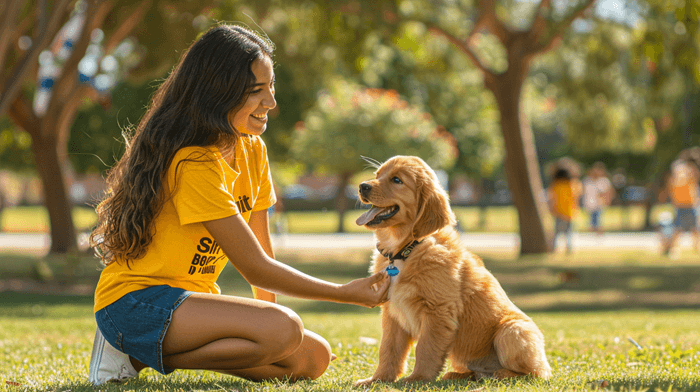
Training your puppy in basic commands is a vital part of responsible pet ownership. Not only does it promote safety and enhance communication, but it also strengthens the bond between you and your furry friend. By following the steps outlined in this guide, you can foster a well-behaved and happy puppy. Remember, consistency, patience, and positive reinforcement are the keys to success.
Now it’s time to take action! Start your training journey today and enjoy the rewarding experience of nurturing a well-trained companion. And for a deeper dive into dog training techniques, don’t forget to check out the Dog Trainer Bible. This digital book is packed with valuable insights and strategies to elevate your training skills and help your puppy thrive!
